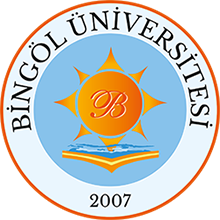Chemical composition of the seeds of some medicago species
View/
Date
2011-09-04Author
Kökten, Kağan
Bakoğlu, Adil
Koçak, Alpaslan
Bağcı, Eyüp
Akçura, Mevlüt
Kaplan, Mahmut
Metadata
Show full item recordAbstract
Legume seeds are rich in many nutrient components, including protein, starch, certain fatty acids, and micronutrients
such as vitamins and trace minerals [1–3]. Some species of the family Fabaceae are a source of cheap protein for both humans
and animals [4], and legumes are generally rich sources of proteins [5, 6].
Information on the chemical composition of Medicago seed oil is very scant [7, 8], while previous workers investigated
phytochemical properties of some legumes widely [9–12]. The objective of the present study was to determine the tannin,
protein contents, and fatty acid composition of the seeds of Medicago L. species (M. disciformis DC., M. polymorpha L.,
M. intertexta (L.) Mill., M. scutellata (L.) Mill., M. truncatula Gaertn. and M. orbicularis var. marginata (L.) Bart.). The
results of the fatty acid analysis are shown in Table 1, and total protein and tannin contents in Table 2.
The total protein amounts of the feed crops studied were found to be between 30.50–47.17% in Medicago orbicularis
var. marginata and M. truncatula. These were 34.87, 34.93, 36.20, and 38.30% in M. intertexta, M. scutellata, M. disciformis,
and M. polymorpha, respectively.
The protein levels were determined in fruit, leaf, and steam of Medicago noeana, M. orbicularis, M. polymorpha var.
vulgaris, M. rigidula var. submitis, and M. rigidula var. rigidula [7]. According to them, the protein levels studied were found
to be between 20% and 30%. The protein levels of fruits were found to be higher than those in leaf and steam. On the other
hand, the protein contents of fruit of M. noeana, M. orbicularis, and M. polymorpha var.vulgaris were found to be higher than
in fruits of other species.
The tannin amounts of feed crops studied were found to be between 0.27–1.23% in M. orbicularis var. marginata and
M. scutellata. The others comprise 0.30% (M. intertexta) and 0.70% (M. disciformis, M. polymorpha and M. truncatula),
respectively. It was reported that condensed tannin may act as anthelmintics against parasitic nematodes or indirectly by
improving nitrogen supply [13–15].
The main components in the seed oils of Medicago species were palmitic, oleic, linoleic, and linolenic acids.
The other fatty acids of the legume seed oils (arachidic and lignoceric acid) in the studied species were shown to be
lower than 1% except for M. truncatula (Table 1). This is similar to those reported [12]. On the other hand, behenic acid was
at the highest level in M. disciformis (1.11%). Some researches have indicated that oils with high levels of long-chain SFA
such as behenic acid may be difficult for digesting enzymes to digest in humans and animals [16].
The results of the present study, as far as unsaturated fatty acid content is concerned, are supported by previous
leguminous studies [12, 17, 18]. All these studies showed that the saturated, and particularly unsaturated, fatty acid contents of
Fabaceae seed oils are closely allied to each other and that the main components in the oils are linoleic-oleic type fatty acids.
Collections

DSpace@BİNGÖL by Bingöl University Institutional Repository is licensed under a Creative Commons Attribution-NonCommercial-NoDerivs 4.0 Unported License..













